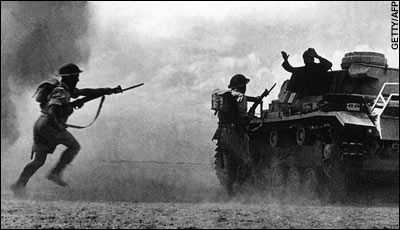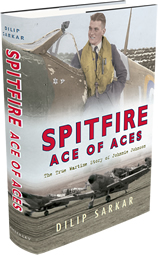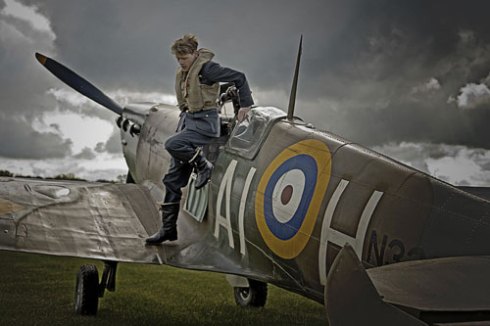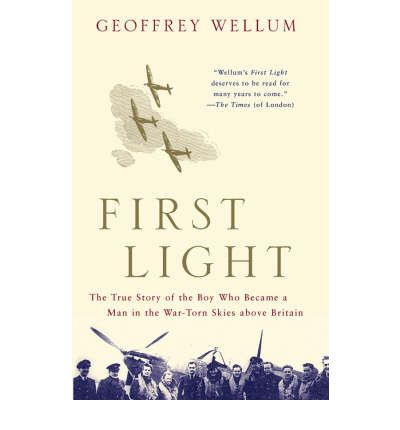 The Fatal Englishman is Sebastian Faulks’s first and so far only venture into non-fiction. It is a triple biography, whose subjects were all men of high promise who died young. They are the painter Christopher Wood (1901-1930), pilot and author Richard Hillary (1919-1943) and Jeremy Wolfenden (1934-1965), an academic and journalist.
The Fatal Englishman is Sebastian Faulks’s first and so far only venture into non-fiction. It is a triple biography, whose subjects were all men of high promise who died young. They are the painter Christopher Wood (1901-1930), pilot and author Richard Hillary (1919-1943) and Jeremy Wolfenden (1934-1965), an academic and journalist.
Faulks writes on his own website:
“It was in some ways an odd book for me to write, because I have such mixed feelings about biography. But as I wrote, I found odd connections between the three – circumstantial and thematic. I saw that since they came from different parts of the century I could smuggle in an oblique portrait of England and how it had changed in the 20th century.”
David Hare in his Spectator review of 1996 said: “The book is on a great theme; how the failures of Britain in the 20th century have seeped into the soul of its countrymen.”
The second section on Richard Hillary captured my attention. Faulks dashes through the early years to get to where he wants to be: with Hillary in 1940, at RAF flying school in Scotland.
It is difficult for Faulks to be compelling in his descriptions; Hillary’s own words in The Last Enemy grasp the reader around the throat while Faulks is left to mechanically fill in biographical detail. Faulks is helpful though, in contextualising Hillary and in observing his lasting place in history.
Faulks suggests that Hillary returned to flying, against the advice of his doctors, out of some First World War sense of camaraderie, and he draws comparisons with Wilfred Owen. He writes:
“In the Great War many men joined up from a sense of patriotic duty and were then disillusioned. Their motivation after that point was sometimes no more than a will to survive, but in many cases the lost cause of patriotism was replaced by a desire to honour their dead friends: only by seeing it through to the end, only by enduring, could they make some sense of the sacrifice that had been made by so many. This feeling was less common in the Second World War because in 1939-45 most men felt they had a proper moral cause to fight for; they therefore had less need of the subtler claims of the dead. Hillary, however, made it quite clear that this ’14-18 feeling was a powerful if not primary motivation for him.” (217)
Faulks’ account, however, eventually leads one to conclude that it was Hillary’s bloody conceit and indestructible arrogance that made him insist upon flying Blenheims– even after experience had confirmed that his catastrophically damaged hands could not properly control such lumbering aircraft.
Peter Parker argues in The Independent:
“The shared features of their stories are vital to Faulks’s book; without them, it remains a collection of three not especially distinguished biographical essays. What the form dictates is surely something a little more virtuosic than these perfectly decent, very readable but very conventional accounts. We are left to draw our own conclusions, one of which is that while Faulks’s subjects were undoubtedly moulded by their times, their individual falls had more to do with private than public pressures. What proved fatal to these Englishmen were the particular flaws of temperament each carried within him.”
Parker may be correct in his assessment that each of these characters has an individual failing, but I think he understates the significance of history’s processes. Despite the fact that only one of the fatal Englishmen is in active service, all three stories are touched by the effects war.
Much of Faulks’ writing follows a mission: to articulate the horror of war which, for so many, was literally and devastatingly incommunicable. “I felt that these things needed to be explained to people of my generation,” he says. “That may seem rather odd because there have after all been some great war memoirs and poetry written, but they weren’t giving the kind of experience that I wanted to write about. I felt there was something else to say.”
In an interview with Andrew Miller, he describes the need for imaginative access to the past. He explains:
“I have this tremendous greed for the experience of the near past. I never wanted to be a centurion on Hadrian’s Wall or to live in 18th-century London but I would fantastically like to be alive in the 1930s and 40s…
I like the idea that everyone’s life is a complete story, with tiny overlappings and long roots in history. My generation is uniquely privileged in that we haven’t had to go to war, but my father and my grandfather were there and because of that, it’s part of my life. I don’t think I had really grasped that until my first son was born in 1990. That, more than anything else, has been the engine behind my writing.”
I can’t shake the thought the thought though, that Faulks’ writing leaves me a bit chilly. He is competent, applauded and well-trained. But his prose somehow fails to fire me up. I am sure this is a failing and misunderstanding on my part, but as much as I agree with his theories and am fascinated by his topics, I just can’t get my teeth into it.
The Fatal Englishman is interesting and certainly worth reading; but for something that really gets under the skin, we’ll turn elsewhere…
 There are now many posts on this site about Bomber Command and their campaign over Germany. Although important for context, they don’t tell the story of Grandpa’s service. His flights were not through the flak- riddled nights of Europe. His war was over North Africa.
There are now many posts on this site about Bomber Command and their campaign over Germany. Although important for context, they don’t tell the story of Grandpa’s service. His flights were not through the flak- riddled nights of Europe. His war was over North Africa.





